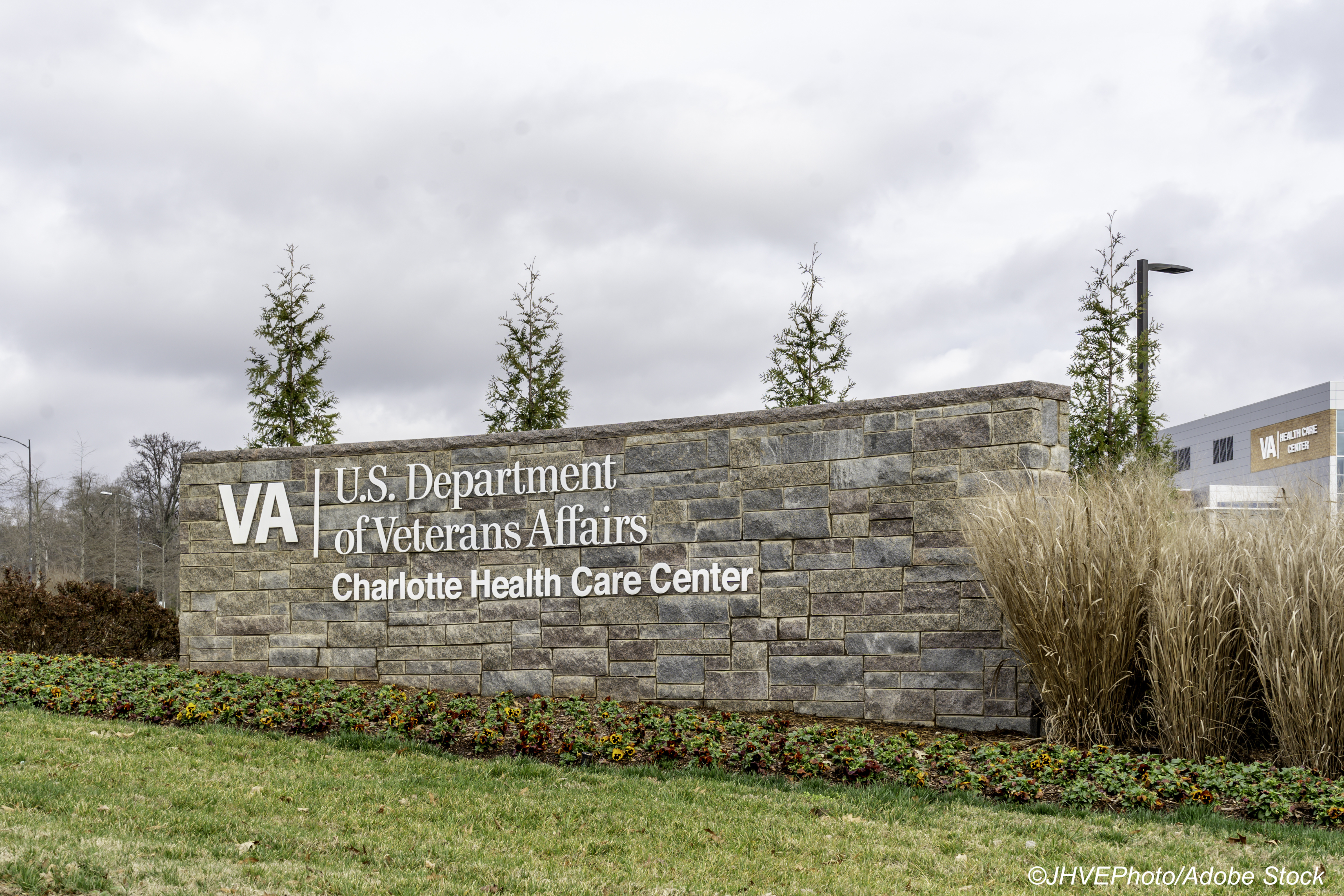Comparing two common approaches to boosting blood-pressure (BP) control—adding a new medication or maximizing the dose of the current medication—the latter was almost three times more common than the former, according to a study of VA data.
In the retrospective analysis of an observational data set of older veterans with hypertension and a systolic BP ≥130 mmHg, despite pharmacologic treatment, new medication add-on was linked with greater systolic BP reduction but less frequent sustained intensification, reported Carole E. Aubert, MD, MSc, of Bern University Hospital in Switzerland, and co-authors, including researchers from the Center for Clinical Management Research at Veterans Affairs Ann Arbor Healthcare System in Michigan.
The finding suggests that “adverse drug events might be more common or patients [are] less willing to take additional medications,” they stated in the Annals of Internal Medicine.
They conducted a large-scale, population-based, cohort study to determine which of the two antihypertensive treatment approaches was more frequent and sustainable, using VA data and Medicare records from 2011 through 2013. The authors emulated a hypothetical trial to assess the observational effectiveness of each intensification approach on sustainability and systolic BP at 3 months—corresponding with the usual pharmacy refill period—and 12 months. New medication add-on was deemed treatment while maximizing dose was called control.
All participants were established VA primary care patients ages 65 or older, who were not on maximum dose BP medication, and who presented with baseline systolic BP of 130 mmHg or higher. Ultimately, 178,562 patients were enrolled (98.1% male; mean age 75.8).
Adding a new medication was defined as a total dose increase with new medication; maximizing dose was defined as a total dose increase without new medication.
The authors reported that 25.5% of the patients (mean age 75.5) had intensification by new add-on medication while 74.5% (mean age 75.9) had intensification by maximizing dose. The addition of a new medication was more likely with younger age and a higher baseline systolic BP.
They also found that compared with maximizing dose, adding a new medication was tied to:
- Less intensification sustainability: average treatment effect −15.2% (95% CI −15.7% to −14.6%] at 3 months; −15.1% (95% CI −15.6% to −14.5%) at 12 months.
- Slightly larger reduction in mean systolic BP: −0.8 mmHg (95% CI −1.2 to −0.4 mmHg) at 3 months; −1.1 mmHg (95% CI −1.6 to −0.6 mmHg) at 12 months.
Also, sustained intensification was more likely with maximizing dose (65%, 95% CI 64.7% to 65.2%) than with adding a new medication (49.8%, 95% CI 49.3% to 50.3%) at 3 months, which corresponded to an average treatment effect of −15.2 percentage points (95% CI −15.7 to −14.6 percentage points), according to Aubert and co-authors. The results were similar at 12-month follow-up.
Finally, the authors found no pattern of intensification approach according to facility characteristics, geographic location, type of clinic, or by the proportion of patients with geriatric or specialty care.
Study limitations included the fact that VA and Medicare pharmacy records do not measure medication intake; less than 2% of the cohort were women; and the algorithm that captured medication discontinuation only did so after a delay or absence of an expected refill. Also, the data were susceptible to unmeasured confounding.
What do these findings mean in a real-world clinical setting?
Whatever the chosen strategy, treatment intensification leads to large BP decreases in the patients who need it most, wrote Olivier Steichen, MD, PhD, of Assistance Publique-Hôpitaux de Paris, in an editorial accompanying the study.
The authors show “that the mean 12-month decrease in systolic BP is about 8 mmHg in patients with baseline systolic BP between 140 and 160 mmHg and about 20 mmHg in those with baseline systolic BP over 160 mmHg,” he noted.
So the study provides support to the general principles of antihypertensive drug prescription, according to Steichen; specifically, “[w]hen intensification is indicated, we should not waste time with elaborate reasoning: Either add a drug or maximize the dose of existing drugs, whichever seems to fit best with the patient’s current treatment, clinical state, and preferences.”
Taking that “keep it simple” approach may be the best bet when there is limited “evidence available to guide intensification when treated patients do not reach their BP goal,” he pointed out.
In 2017, the American Heart Association/American College of Cardiology (AHA/ACC) updated its BP guidelines, lowering the definition of hypertension from ≥140/≥90 mmHg to ≥130/≥80 mmHg, and re-classifying “pre-hypertension” as elevated BP (120-129/<80 mmHg).
“This change was prompted by a growing body of evidence showing a linear relationship between blood pressure and cardiovascular risk, namely that more intensive blood pressure control improves cardiovascular outcomes and survival,” most notably the SPRINT trial, explained the authors of a 2021 ACC expert analysis.
In terms of medication intensification, the AHA/ACC recommend the following:
- Stage 1 hypertension (130-139/80-89 mmHg) with atherosclerotic cardiovascular disease (ASCVD) or 10-year CVD risk ≥10%: Start both nonpharmacologic and pharmacologic therapy; reassess BP in 1 month. If at goal, reassess every 3 to 6 months. If not at goal, assess for adherence and consider intensification of therapy.
- Stage 2 hypertension (≥140/≥90 mmHg): Start both nonpharmacologic and pharmacologic therapy; reassess BP in 1 month. If at goal, reassess every 3 to 6 months. If not at goal, assess for adherence and consider intensification of therapy.
And the American College of Physicians/American Academy of Family Practice (ACP/AAFP) call for the intensification of drug therapy when systolic BP ≥140 mmHg for secondary stroke prevention, as well as in patients post-transient ischemic attack in order to hit a target BP below this level. “A direct conversation with the ACP guideline committee clarified their rationale for recommending the 150 mmHg systolic BP drug therapy initiation threshold and on-treatment target (<150 mmHg),” explained John M. Flack, MD, MPH, and Bemi Adekola, MD, both of Southern Illinois University in Springfield, in Trends in Cardiovascular Medicine. “They simply weighed the positive SPRINT subgroup results in the 75 and older age cohort less heavily than the aggregate body of other clinical trial data considered for older persons.”
In a “Myth of the Month” column for CHEST Physicians, Douglas S. Paauw, MD, of the University of Washington in Seattle, argued that “data are striking on how little effect there is in increasing antihypertensive medication doses. Adding another antihypertensive medication should be the standard practice when the first medication started does not achieve the desired goal.” He cited data from the JNC 7 report, among others, to support his conclusion.
In a 2021 JAMA Internal Medicine study, Michael B. Rothberg MD, MPH, of the Cleveland Clinic, and co-authors looked at ties between acute hypertension treatment and subsequent inpatient acute kidney injury, myocardial injury, and stroke at 30 days and BP control up to 1 year. They found that “hypertension was common among medical inpatients, but antihypertensive treatment intensification was not. Intensification of therapy without signs of end-organ damage was associated with worse outcomes.” Comments submitted to the journal offered praise for the findings, stating that “simply making patients ’Euboxic’ harms people.”
According to a 2021 community health center webinar, entitled “National Hypertension Control Initiative (NHCI) Act Rapidly” and presented by the AHA, the Health Resources and Service Administration, and the Department of Health and Human Services, “there are many causes for resistant hypertension [and] one of the worst is… the person has elevated BP, and we just don’t do the right thing to increase pharmacotherapy and lifestyle management,” stated Keith C. Ferdinand, MD, of the Tulane University School of Medicine in New Orleans. He advised clinicians to follow the 2018 AHA algorithm for managing these patients.
-
Adding a new medication, compared with maximizing dose of current treatment, was associated with a −15% point difference in the probability of sustained intensification but a −1.1 mm Hg greater reduction in mean systolic blood pressure (BP) over 12 months in a retrospective analysis of older veterans with hypertension and a systolic BP of ≥130 mm Hg.
-
These study findings suggest adverse drug events might be more common, or that patients are less willing to take additional medications.
Shalmali Pal, Contributing Writer, BreakingMED™
The study was funded by the National Institute on Aging (NIA) and the VA.
Aubert reported support from the Swiss National Science Foundation. Co-authors reported support from the NIH, the NIA, the VA, the American Cancer Society, and the Gordon and Betty Moore Foundation
Steichen reported no relationships relevant to the contents of this paper to disclose.
Cat ID: 6
Topic ID: 74,6,730,6,192,925




Create Post
Twitter/X Preview
Logout